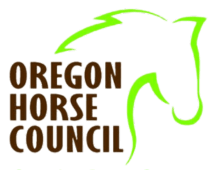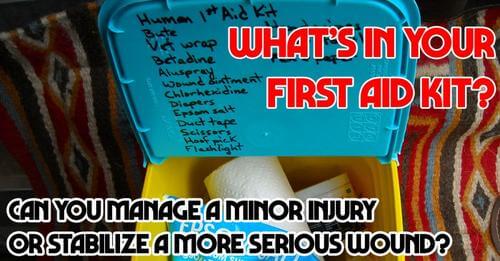Are you prepared to be a vet long enough to manage a minor injury or stabilize a more serious wound? In such situations a well-stocked and accessible emergency first-aid kit is indispensable.
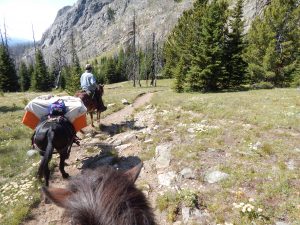
Your first aid kit should be easily accessible
Be prepared to stabilize any injuries your horse, or mule, incurs until your veterinarian can get there by maintaining a conveniently located equine first-aid kit. I have 3 separate first aid kits: Barn kit – Trailer kit – Trail kit; Each kit is stocked with the items I’ll need until the vet arrives. Time is critical when an accident happens and you don’t want to waste time hunting around for bandages, thermometer, or other necessities.
Over the years I’ve compiled a list of items, with my Vet’s help, to include in our first-aid kit.
NOTE: It’s not the items that you carry but rather it’s having the knowledge to use those items. Talk with your veterinarian about how to use all the items in your 1st aid kit.
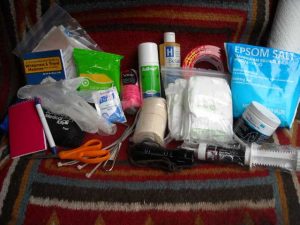
Basic 1st Aid Equipment
- A tight-sealing plastic container (I use clean kitty litter containers) is a good option. Whatever you choose, make sure it’s clean, airtight and waterproof to ensure the contents stay sterile and ready to use. The tub not only serves to hold the kit but also as a bucket to soak hooves or wash a wound.
- Headlamp (with working batteries) to care for your horse on a dark night or dimly lit barn
- Rectal thermometer—a plastic digital version is safer than an old school glass
- Small jar of Vaseline or other lubricant to help insert thermometers
- Stethoscope to check heart rate and listen to gut sounds
- Surgical gloves to help prevent wound contamination and keep your hands clean
- Roll of duct tape—convenient to wrap a hoof because it is waterproof and durable
- Safety scissors with rounded ends to avoid cutting your horse when removing a bandage
- Tweezers—handy to help remove a splinter or ticksWire cutters to free a horse from wire
- Sharp knife to use if a horse is tangled in ropes or has a foot stuck in a hay net
- Cold pack to reduce swelling from an injury. Chemical cold packs that create “instant cold” are handy when ice or cold hosing isn’t available are very handy.
- First-aid knowledge booklet
Treatment Supplies
Horses can suffer a variety of injuries, and whether the situation requires an emergency call to your vet or is something you can treat yourself at home, you’ll want supplies to quickly and gently clean and disinfect the wound. They include:
- Antiseptic scrub such as Betadine (povidone iodine) or Nolvasan (chlorhexidine) for washing/disinfecting a wound.
- Antiseptic wound cream, powder or spray-on treatment to prevent infection and encourage healing – always seek veterinary advice before applying these products.
- Saline solution (contact-lens solution with a squirt nozzle) for flushing hard-to-reach, delicate wounds, such as near an eye
- Triple-antibiotic ointment to treat minor cuts, scrapes, or burns.
- Electrolyte paste for treating dehydration. An oral supplement to encourage horses to drink.
Bandages
Once a wound is cleaned, you’ll need various bandaging materials to cover and keep it clean. You also want them on hand to stop bleeding quickly. Bandaging items include:
- Nonstick sterile gauze pads (telfa) squares to clean and cover small wounds
- Self-sticking bandages— such as Vetrap™—used to keep the gauze squares in place. Replace these annually.
- Gauze rolls for padding
- Sanitary napkins or diapers – wound dressings
Medications
Depending on your veterinarians comfort level on your skills in administering medications you may want to have a few of these in your 1st Aid Kits. Ask your vet to teach you when and in what circumstances to administer these drugs. If it is at all possible always consult with your vet first. If they can get to your horse quickly, they might not want you to administer anything so they have a clearer idea of the extent of the issue.
- Phenylbutazone (“bute”) and flunixin meglumine (Banamine) are nonsteroidal anti-inflammatory pain relievers. Talk with your vet to learn the correct dosages and when to use.
No matter how extensive your first-aid kit is, it will never replace a call to your veterinarian in an emergency. Your vet has years of experience and skills that you don’t possess. We just need to be able stabilize any injuries your horse, or mule, incurs until your veterinarian can examine the animal.
6 Things to Do NOW Before an Emergency Happens
- Post emergency contact information for your vet and farrier in all of your 1st Aid Kits, save it in your phone, and post it in your barn.
- Know how to take your horse’s temperature, pulse and respiration and be aware of these typical resting vital signs. Ask your vet to teach you how. Write down these figures so you can tell the vet what they are for your animals.
- Check your first-aid kit on a regular basis (I check mine annually). Discard and replace expired medication.
- Replace anything you take out of your first-aid kit as soon as possible.
- Educate yourself. Make sure you know how to use everything in your kit or have your veterinarian show you. Practice wrapping your horse’s leg before a stressful emergency situation. ASK YOUR VET TO HELP
- Keep your horse’s health records up to date and handy so you can answer any questions your vet might have about his medical history. This is especially important when you travel.
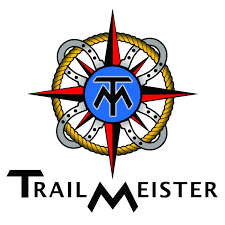
TrailMeister is the world’s largest horse trail and camp guide. With all of the info that you need on thousands of horse trails and camps across the US and Canada.
